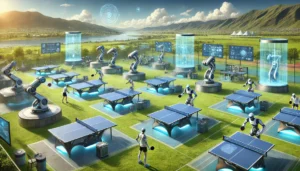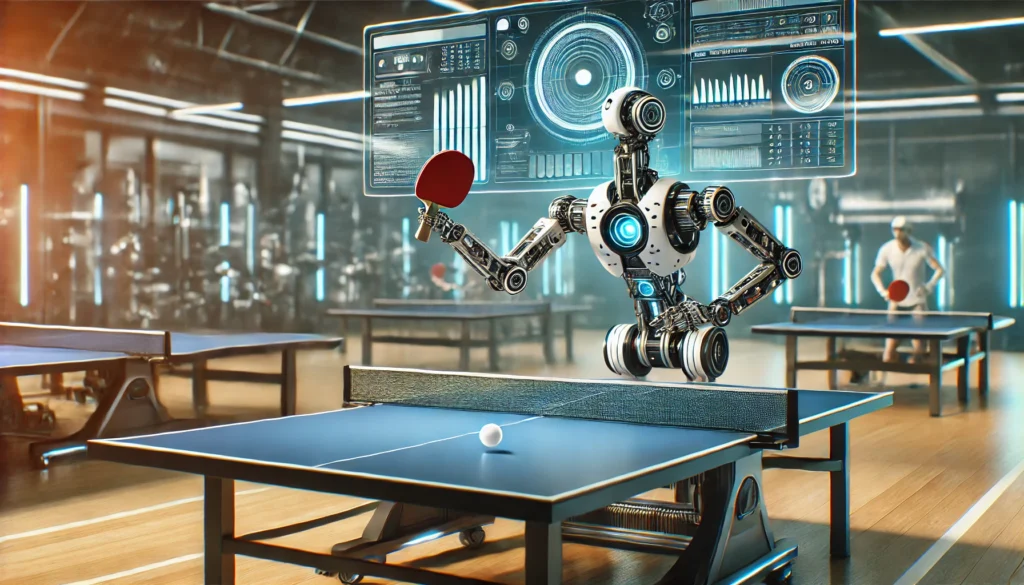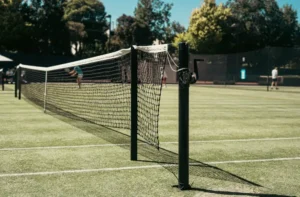Do Ping Pong Robots Have Simulated Games?
A sport that requires fast reflexes, strategic thinking, and fine motor control, table tennis has made some interesting shifts with the introduction of robotics. The sport was once a strictly human pursuit—and now it’s audio-visual races in robotic-player contests that are breaking new ground. These robotic systems are not only changing the game of table tennis. But also creating new possibilities for improving your skills — be it using them as training gears or as future competitors in matches. In this blog, We will discuss about Do Ping Pong Robots Have Simulated Games?
The Evolution of Table Tennis Robots
Notably, we have seen the use of robots to train table tennis players before. The first robotic systems were barebones, capable of delivering a few rudimentary forehand and backhand shots. In this article, I am going to give you a brief introduction but with newer AI, computer vision and robotic technologies a lot smarter robots have been produced which can perform all kinds of shots very quickly and accurately.
- Computer Vision Systems: Using high-speed cameras, robots track the ball’s movement in real-time, helping them anticipate shots and respond with precision.
- AI-Driven Learning Models: These systems allow robots to adapt based on player patterns, making them increasingly effective as training partners.
- Variety in Shot Techniques: Advanced robots can mimic topspin, backspin, and sidespin shots, helping players practice a range of returns and scenarios.

The advanced level of table tennis robotics is turning a simple training tool into a sophisticated machine that can compete against even average players. High-speed cameras near the court follow the movement of the ball and relay this information to computer vision systems, enabling calculation of ideal trajectory for return shot by robot. This advanced eye helps the robot predict when a player will take a shot and respond appropriately, resulting in an exciting and interactive
Simulating Real Games: Do Robots Have Simulated Matches?
Another feature you will find on almost all of the modern table tennis robots that will really excite you is their ability to simulate real games. Unlike the robots of yore whose only functions were repetitive, modern systems can simulate matches with players and use algorithms to mimic human decision-making.
These robots simulate various playing styles and strategies by:
- Adjusting Shot Speed and Spin: Robots can vary their shots to emulate aggressive or defensive opponents, providing a comprehensive training experience.
- Mimicking Player Tendencies: Using data from real matches, robots can replicate common human strategies, allowing players to practice against different types of opponents.
- Adapting to Player Skill Level: As a player improves, the robot can adjust its difficulty, creating a more engaging and adaptive training session.
By programming these robots to simulate specific scenarios or mimic certain playing styles, developers have created an effective training tool that pushes human players to adapt, respond, and improve. This level of interaction enhances the quality of training by offering varied gameplay and decision-making scenarios.
The Impact of Robotic Training on Human Players
The impact of robotic training on the performance of human players has been considerable among the overall table tennis training regimen. These robots provide consistent and challenging practice, assisting players in honing their reflexes, accuracy, and decision-making. Furthermore, players can get used to different types of opponents with different styles by programming robots to play in various ways.
Robotic Trends Robotic training, especially for younger players can be helpful. With patient, consistent coaching via robot, players can focus on foundational skills and learn to be confident without the stress of competing with more advanced players. Additionally, robots can be calibrated according to the skill level of a player and thus, maintaining an ideal level of challenge during practice.

Some of the benefits of robotic training for human players include:
-
Sharpened Reflexes and Coordination – Because of the speedability the robot shots and how accurate they are, this makes players fly into action bringing their hand-eye coordination to another level
-
Skill Customization: By allowing players to practice against various types of shots and strategies, robots contribute to more well-rounded skill development.
- Mental Toughness: Facing a robot that can adjust its difficulty can help players build resilience and prepare for high-pressure situations in real matches.
The Future of Robotic Table Tennis
The future of robotic table tennis holds great promise as technology continues to advance. But one especially fascinating possibility is the robots going up against humans at a high level. Though our current robots are unable to adapt beyond pre-defined parameters with creative play, research and development continue to evolve.
Future advancements may bring about robots that can:
- Engage in Adaptive Gameplay: With advancements in AI, robots could learn to read and counter unique player strategies in real time.
- Incorporate Machine Learning for Real Matches: Robots could analyze real match data to refine their playing style, potentially reaching levels of competition currently exclusive to humans.
-
Improved Real-World Mimicking: As computing power and information continues to grow, robots may soon (if they haven’t already) be able to mimic the frenzied, undependable pace of human competition even more accurately.
Another exciting application is the use of robots to study and enhance human performance. Robots can serve as a key to open the knowledge of what is optimal by replicating the movements and strategies used by top players. Players can therefore hone their craft and reach new levels using this data-driven method.
Ethical Considerations and the Human Element
The increase of robotic table tennis may come with some benefits, but also presents significant ethical considerations. The robots will become better as time goes on, but might take away from the human touch to a sport. The balance between aspects that keep table tennis exciting and trendy together with ongoing technological innovation needs to be maintained.
Some ethical considerations include:

- Preserving the Human Aspect of the Sport: Table tennis has a deeply human element, from the intensity of competition to the unique styles of each player. Careful consideration is needed to ensure technology complements rather than replaces these aspects.
-
Vices Due to Constrains in their Design: Affordability and Accessibility-> To be able to have an even playing field, everyone contributing should have access to similar advanced robots.
At the end of the day, robotic tech in table tennis should come down to making humans better Humans not taking away from that. Together in partnership, humans and robots can build a future with technology. That is used as a means for human development, sparking innovation, creativity and greater value through the sport of table tennis.
Conclusion
The use of robotic technology in table tennis is a manifestation of the advances being made all around us in sports science and artificial intelligence. These robotic systems are altering the entire landscape of the sport; from training aids to future rivals. Although In this blog, We will discuss about Do Ping Pong Robots Have Simulated Games? and there are challenges and ethical issues in developing them, the future of robotic table tennis can be a great place for human and machine player development.
As they become more adept at mimicking live game play and adjusting to the tactics of human participants, robots are proving to be a vital resource for developing talent. The lines between human vs machine performance are increasingly blurred. But it is a given that videogame technology will take table tennis to new levels and inspire peeps young and old within the sport.
FAQ’s Section
- What do table tennis robots do?
They assist in training by delivering balls with various spins and speeds, helping players improve skills. - Can robots simulate real games?
Yes, advanced robots can mimic real games by adjusting shots and styles to challenge players. - How do robots benefit players?
Robots offer consistent practice, help improve reflexes, and allow training against different play styles. - Are there ethical concerns with robots in table tennis?
Yes, including concerns about preserving the human element and ensuring fair play if robots compete. - Can robots help analyze player performance?
Absolutely. Robots can study player movements, providing insights for skill improvement. - Could robots ever compete in human tournaments?
It’s possible, though robots need further development in adaptability and creativity to match human play.
Do Ping Pong Robots Have Simulated Games?
| Feature | Early Table Tennis Robots | Modern Table Tennis Robots |
|---|---|---|
| Functionality | Basic training aid, limited to simple shot delivery | Sophisticated training tool, simulates various shots and styles |
| Technology Used | Basic motor control and timing mechanisms | AI, computer vision, and real-time data processing |
| Shot Variety | Basic forehand and backhand shots | Wide range of shots (topspin, backspin, sidespin) |
| Game Simulation Ability | No simulated game capability | Capable of simulating realistic matches |
| Player Adaptability | Fixed settings, no adaptability | Adaptive settings to match player skill level |
| Real-Time Response | Limited response to player’s actions | Tracks ball trajectory and adjusts response in real time |
| Potential for Analysis | No data analysis capabilities | Can analyze player’s moves and offer improvement suggestions |
| Ethical Considerations | Minimal concerns | Raises questions about fairness, accessibility, and the human element |





3 thoughts on “Do Ping Pong Robots Have Simulated Games?”